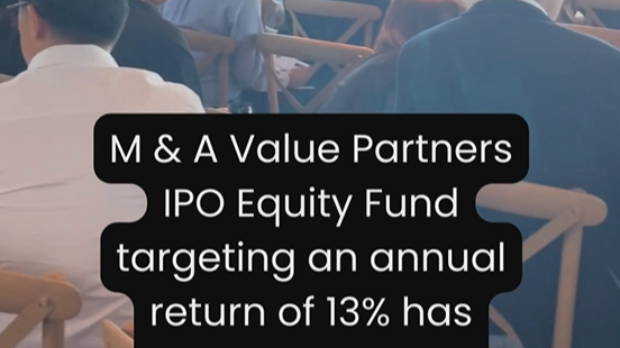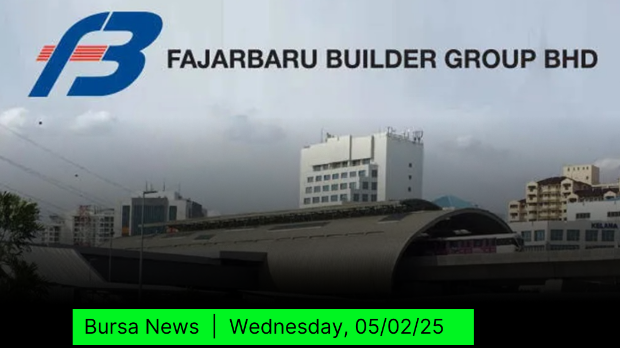Samaiden Group Berhad - Riding on a ‘Plus Sized’ RE Rollout
We recently hosted Samaiden Group Berhad (SAMAIDEN) at our SmallCap Conference. We left the meeting reassured of the strong growth prospects at SAMAIDEN underpinned by: (i) Increasingly visible prospects of new EPCC orders from LSS5 amid a record high orderbook, (ii) Additional 2GW solar quota under the recently announced LSS5+, which doubles the original 2GW quota under LSS5, (iii) Expansion of RE assets to boost recurring income. Re-affirm our Buy recommendation on SAMAIDEN at SOP-derived TP of RM1.69/share.
Getting closer to securing LSS5 EPCC jobs
To recap, the Large-Scale Solar 5 (LSS5) program entails the auction of 2GW solar capacity, which is the largest by far. SAMAIDEN shared that it is targeting up to RM700mn in potential EPCC jobs from LSS5, translating into an estimated 200MWac of potential project capacity, or a 10% share of the auctioned capacity under LSS5. The group has teamed up as EPCC partner with up to nine bidders (developers) under LSS5, whereby SAMAIDEN would have a first right of refusal to come in as the EPCC should these developers be successful in their LSS5 tender. We gather that at least three of the developers that SAMAIDEN partnered with have been shortlisted by the Energy Commission (EC) entailing total capacity of ~133MWac, translating into potential EPCC value of RM400- 464mn. The group expects the awards of the EPCC contracts to materialise from 2QCY25 onwards, which will further expand its record high orderbook of RM521mn (2.3x FY24 revenue).
LSS5+ is a big plus
In a positive surprise, the EC had in January 2025 announced an additional 2GW quota under the LSS5+ program. LSS5+ is split into two packages consisting of:
i. Package A for ground-mounted solar with a total 1500MWac quota and capacity bid range of between 30MWac-500MWac
ii. Package B for floating solar with total quota of 500MWac and capacity bid range of 10MWac-500MWac.
Similar to LSS5, solar PV plants under the LSS5+ auction are scheduled for Commercial Operation Date (COD) by 2027. Bidding for LSS5+ was opened on 20 January 2025 and will be closed on 28 February 2025. Given that bidders for LSS5+ are required to have ready power system studies (i.e. bidders that failed under LSS5 will likely resubmit their bids under LSS5+ albeit with some price revisions), outcome of the bidding process is expected to be relatively faster, likely by May 2025.
In terms of EPCC prospect, SAMAIDEN is targeting a similar 10% share, or 200MWac of LSS5+ EPCC jobs, which could translate into an additional RM700mn worth of incremental EPCC contracts, on top of the RM700mn it is already eyeing under LSS5. The group is confident of its ability to execute, with plans to expedite execution of current CGPP projects in order to manage its resources for LSS5 and LSS5+ prospects.
Other sizeable EPCC prospects in the pipeline
Beyond LSS5 and LSS5+, SAMAIDEN is eyeing to play an EPCC role in: (i) TENAGA’s 2.5GW hybrid hydro floating solar (HHFS) project, (ii) UEMITRAMAS 1GW hybrid solar PV plant in Johor. The former involves installation of floating solar PVs at selective hydropower dams operated by TENAGA in the country. We gather that SAMAIDEN has put in a bid for the Kenyir section of the project involving ~ 500MW capacity, which translates into an estimated RM2.6bn worth of EPCC contract if successful. The tender is expected to be concluded sometime in February 2025. We also gather that SAMAIDEN has expressed interest to participate as EPCC in the UEM-ITRAMAS 1GW hybrid solar PV plant in Johor with the first phase of the project likely to take-off in the first half of the year. The entire 1GW solar PV plant gives rise to a potential RM3.5bn worth of EPCC jobs, excluding its battery energy storage system (BESS) component.
Strong pipeline of RE assets to boost recurring income
Via wholly-owned subsidiary Samaiden Sdn Bhd, SAMAIDEN was shortlisted to develop a 99.99MWac solar PV plant under Package 3 (30MW-500MW category) of the LSS5 auction cycle. The asset will be located in Pasir Mas, Kelantan and will be 100% owned by the group. SAMAIDEN will subsequently enter into a Solar PPA with TENAGA for a term of 21-years with COD targeted by 11 October 2027.
The latest win will be the largest RE asset secured by SAMAIDEN to-date. To recap, the group currently has an estimated 1.2MWac solar assets in operation with another 30.1MWac of net capacity in the pipeline comprising biomass, biogas and CGPP assets, expected to come on-stream over the next 3 years. The latest LSS5 win will boost the pipeline assets to 130.1MWac (net capacity), which will grow its total RE assets significantly to 131.3MWac by end-2027. We estimate that inclusive of the LSS5 contribution, RE assets will eventually account for circa 12% of group revenue, underpinning the group’s internal target of generating 10-15% of revenue from recurring income.
As for LSS5+, SAMAIDEN is targeting another 100MWac capacity (as asset owner) but this time, via a joint venture stake in a consortium. In addition, SAMAIDEN has put in a total bid of 18MW for bioenergy assets under the latest Feed-in-Tariff 2.0 (FiT2.0) program, of which outcome of the bidding is expected to be known within the next 1-2 months.
Participating in BESS Bidding
During the conference, SAMAIDEN also shared that it is participating in the country’s inaugural BESS tender launched back in November 2024. To recap, the EC called for a tender for the development of 100MW/400MWh BESS with a total capacity of 400MW/1600MWh on auction and scheduled for COD in 2026. The tender will first go through the Request for Qualification (RFQ) process after which, qualified companies will then proceed to the Request for Proposal (RFP) process. Capex for BESS is estimated at RM4-5mn/MW and the successful bidder is expected to enter into a long-term supply agreement with TENAGA for a 15-year period. Given that large-scale BESS is still relatively new in the industry, we reckon PIRR could hit the high single-digit range.
Improved dynamics seen for CRESS
Regarding the Corporate Renewable Energy Supply Scheme (CRESS), SAMAIDEN highlighted that improvements have been implemented by the Government to address some of the teething issues previously. CRESS is now opened up to existing electricity consumers (from only new consumers 6-Feb-25 Page 4 of 6 previously), which opens up a much larger potential customer base for CRESS and more importantly, addresses the higher risk and finance cost related to having new customers (with no track record) as offtakers.
High System Access Charge (SAC) is another pain point for CRESS which makes it unattractive compared to grid power. However, a potential increase in base tariff from 2HCY25 could shift the dynamics in CRESS’ favour, especially if the tariff revisions are focused on the commercial (including data centres) and industrial segments, which are the main focus markets for CRESS. As it stands, the group is already in talks with prospective offtakers including those in the data centre industry.
Impact
No change to our earnings projection but any new EPCC win under the LSS5+ auction cycle or other large-scale RE projects could trigger an upward revision.
Recommendation
Re-affirm Buy on SAMAIDEN at unchanged SOP-derived TP of RM1.69. We continue to like SAMAIDEN as one of the prime beneficiaries of an upcycle in RE plant-up underpinned by record high orderbook, a strong balance sheet and a secured pipeline of RE assets to boost recurring income.
From a valuation standpoint, SAMAIDEN is trading at just 15.7x FY26F PER (FYE June), at a discount to historical mean PER of 20x. We see room for valuations to re-rate higher towards +1SD (25x PER) on the back of more aggressive RE plant-up domestically backed by the National Energy Transition Roadmap and an increasingly liberalised domestic RE market.
Key catalysts: (1) LSS5 and LSS5+ EPCC contract awards. (2) CRESS EPCC contract awards. (3) Asset wins under LSS5+. Key risks are a sharp rise in raw material cost such as solar module and delays in project implementation.
Source: TA Research - 6 Feb 2025

















